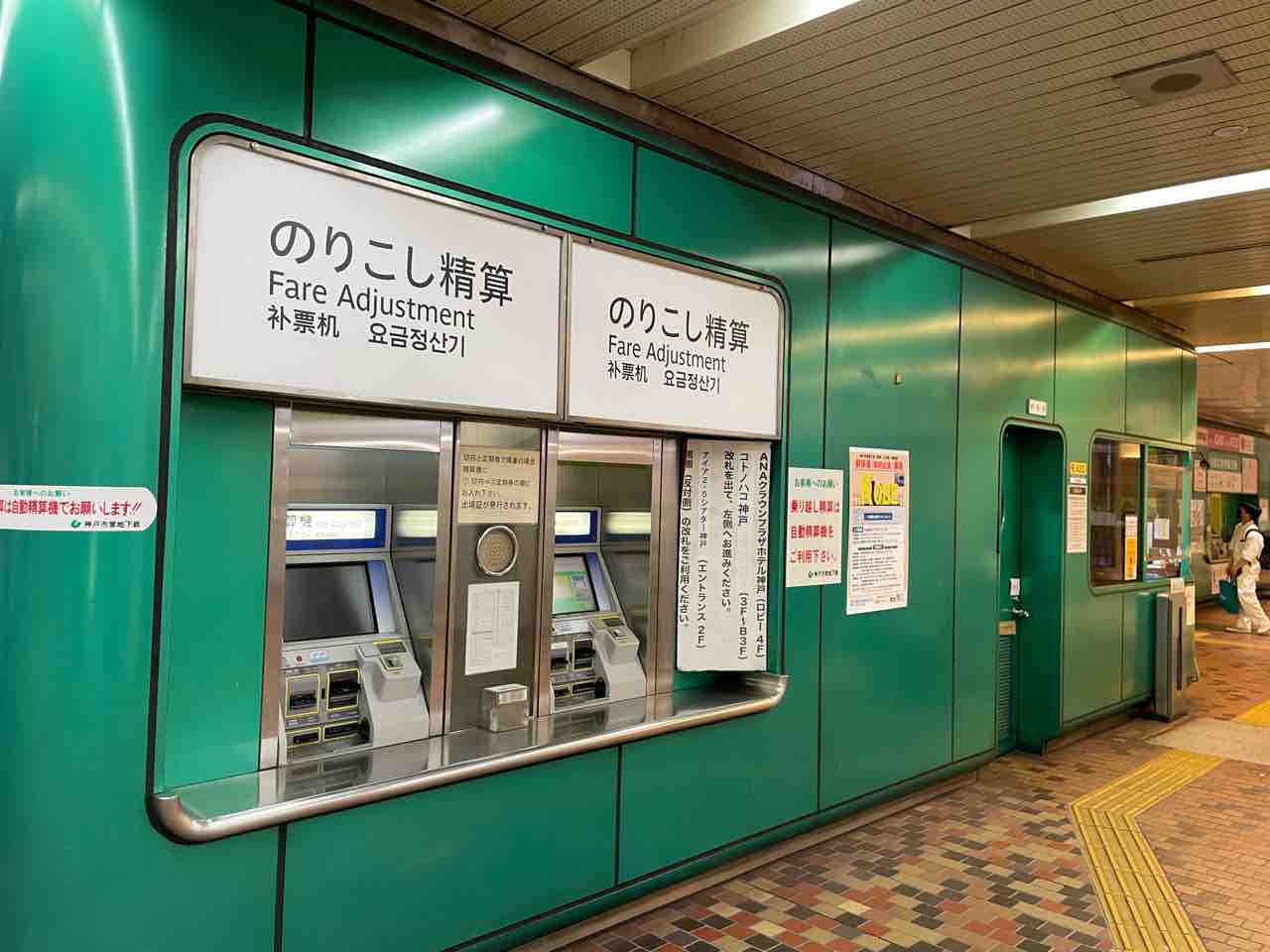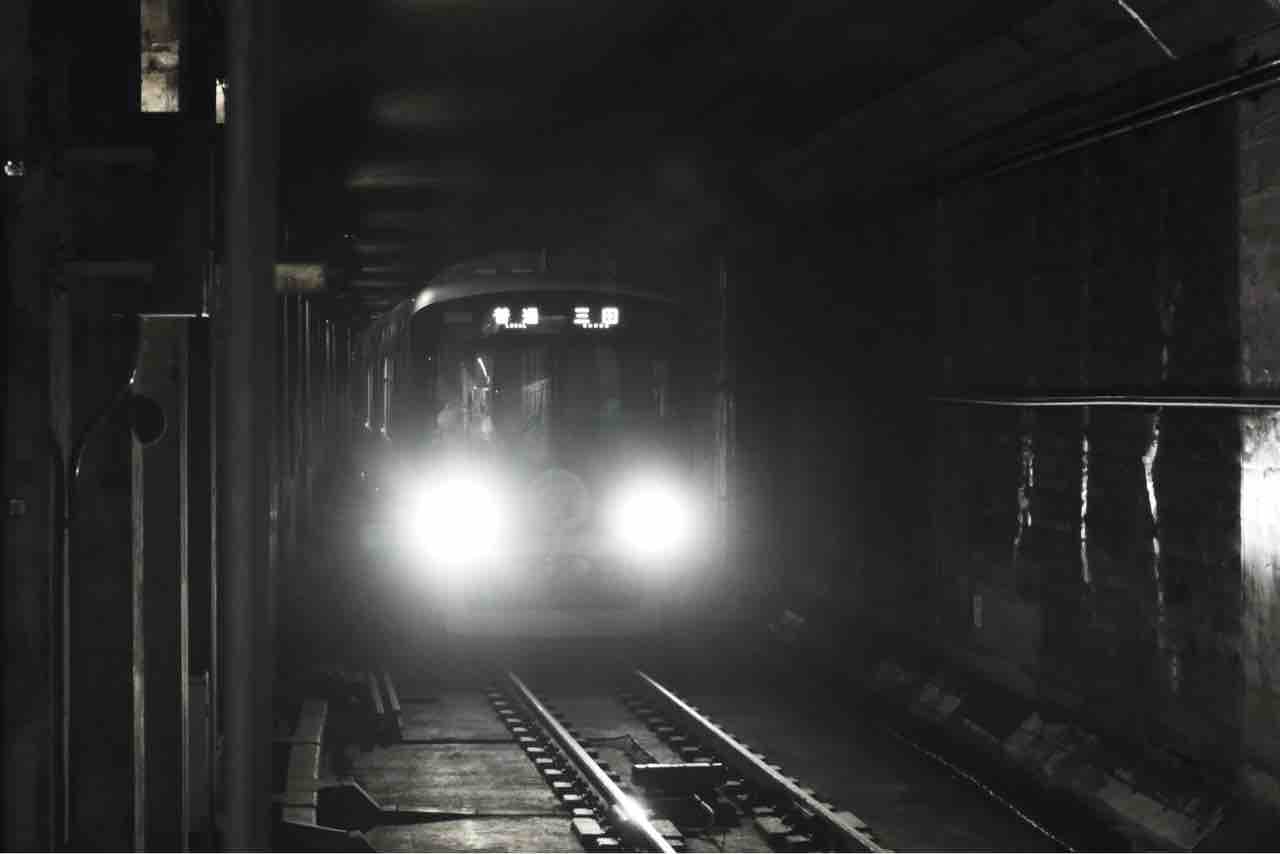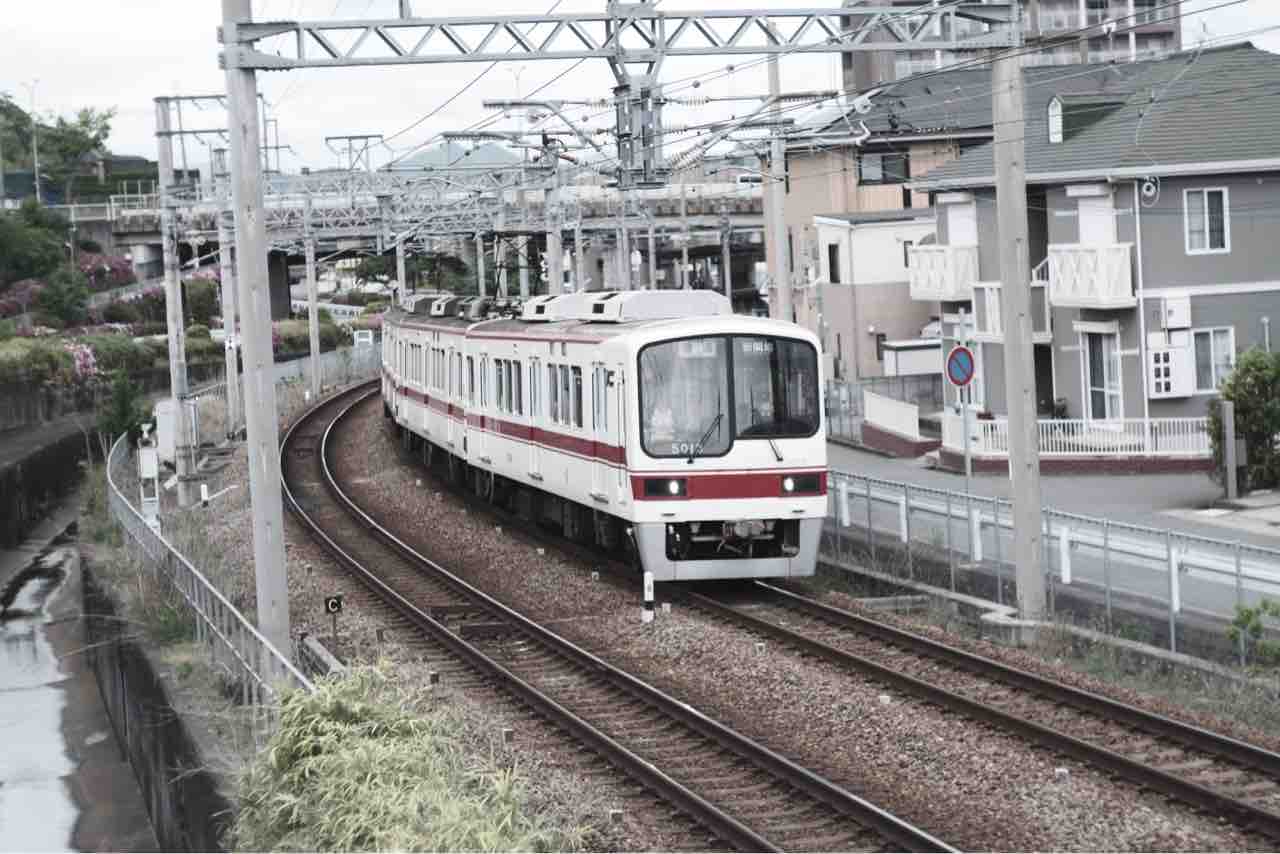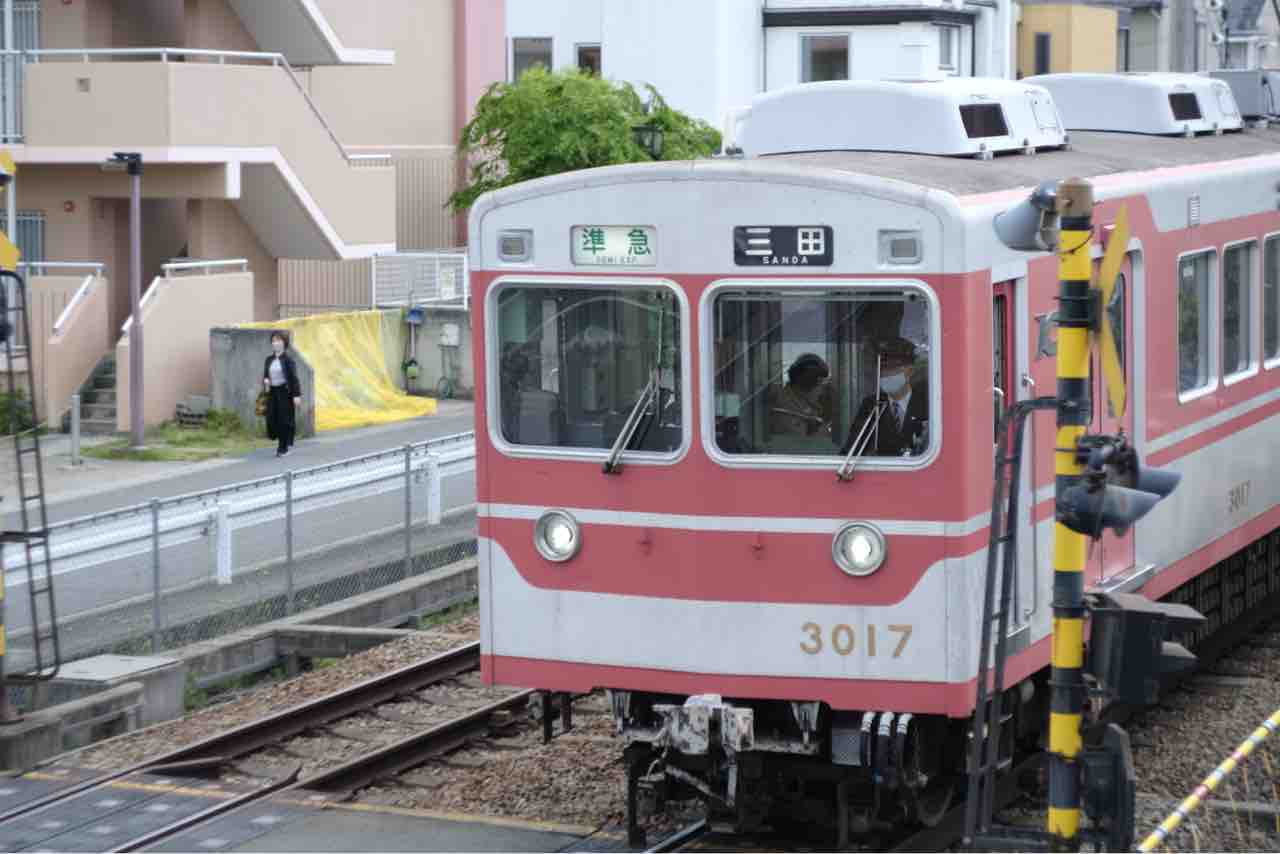神戸電鉄
2022年4月。ゴールデンウィークに突入したこの日、僕は仕事を片付けるとその足で新幹線に飛び乗った。
バッグの中には、購入したばかりの新たな相棒、FUJIFILM X-E4が一緒だ。
旅の目的は、15年ほど前に住んでいた街を走る神戸電鉄。
僕はあくまで、模型鉄(と、架空鉄)普段、撮り鉄はやらない質なのだが、
この新たな相棒で、あの鮮やかな赤と白とのコントラストを撮ってみたくなったのだ。
新神戸で新幹線を降り立たらもうすっかり夜である。まずは今夜は宿で英気を養い、翌朝早くから行動することに決めていた。
まずは、新神戸から宿のある新開地へ向かう。
神戸市営地下鉄へ。
ここの改札は、昭和の匂いがして好きなんだ。
デザインがどことなく船舶を思わせるのは、駅事務所の丸窓ドアのせいだろう。
湊川で神鉄に乗り継ぐため、三宮方面へ。
ちなみに反対の谷上方面は、僕が住んでいたころは北神急行線といった。
その後市営化し、神戸市営地下鉄北神線となった。
三田方面に行く場合は、これに乗って谷上で神鉄に乗り換えるんだよね。
6000形の登場で廃車が進められている1000形。
19mのアルミ車体に鮮やかなグリーンと優しい水色のツートンが似合うね。昭和の名車だ。
湊川駅で神鉄に乗り換える。新開地までは歩いても行ける距離だから、本当は乗り換えなくてもいいんだけれど、
早く神鉄に乗りた~い、そんな妖怪人間のような僕にとっては、これ以外の選択肢はなかった。
ここの天井の低さと壁がむき出しのままなのが、なんだかしみじみとした雰囲気を醸し出している。
湊川と新開地は400mほどしか離れていないから、湊川のホームから新開地駅のものらしき明かりを見ることができる。
ここで僕は、満を持しておニュー(死語)のカメラ、X-E4を取り出した。
このカメラはフィルムシミュレーションという機能がついていて、富士フイルム製品のフィルムをイメージした写真を撮ることができるんだ。
これは言ってみれば、RAW現像をしなくても手軽に素敵な写真が撮れる、まさにナイスな機能だ。
新開地から神鉄の6000系がやってきた。
試しに、夜の神戸をイメージしてフィルムシミュレーション「ETERNAブリーチバイパス」で銀残し風の写真を撮ってみる。
写真はそんなに得意ではないが、こうしたカメラの機能を使って試してみるのは嫌いじゃない。
反対側に来た1000系に乗り込み、新開地へ。
上はiPhoneで撮影した写真。下の写真と比べて、同じ塗色の電車とは思えないくらい色が違う。
新開地で1000系とはお別れし、宿へ向かう。また明日、会おうぜ!
どこかで一杯飲もうかと思ったけれど、この日はもう遅くてどこの居酒屋もおしまいだったので、たこ焼きとうどんを買って宿で食べる。
今夜の宿は激安ビジホ。こちとら男の一人旅、雨風がしのげて、寝られりゃあ十分ってわけ。
しかしあれだなぁ。やっぱりこっちのたこ焼きは美味いね。トロットロだよおっかさん。
たこ焼きといえばやっぱこれだよね。え?銀だこ?何だっけそれ?
翌朝はあいにくの天気。午前6時時点では雨こそ降っていないが曇天。
ゴールデンウィークワンデーパスを使って、新開地から鈴蘭台へ。
鈴蘭台では神鉄のマスコットキャラクターしんちゃんがお出迎え。
クレヨンではない。
別のフロアにもこれでもかというくらい大量のしんちゃん。
鈴蘭台の北側にある踏切。
ここからレンズを変えて撮影。バッグから取り出したのは旧ソ連製のオールドレンズ、Helios44-2 58mm。コイツに変換マウントをかませて、X-E4に装着する。
前照灯が撤去された1362と1351の連結面。1000系列は個々の車に特徴があり、魅力の一つとなっている。
3連や2連、両運転台の組み合わせで3、4両の編成を構成する。以前は5両編成もあったようである。
ちょっとはオールドレンズらしさ出てる?
こちらは粟生線、1103-1202-1104の3両編成。
鈴蘭台から北方向に粟生線と有馬線が分岐し、粟生線方面は急勾配・急カーブを登っていく。
僕の好きなシーンだ。
しかしなんか暗いなぁ〜と思ったら露出補正が−2にされていた…まだカメラの取り扱いに慣れていない…トホホ。
iPhoneでやや明るくレタッチするか〜。
以前住んでいた岡場駅で降りてみた。
岡場駅は2面4線ホーム構造となっており、退避交換が可能となっている。
岡場駅から近い小高い山上にあるカリヨン時計塔。時計は少なくとも僕がこの街に住んでいた14年前から止まっている。
田尾寺付近から。5000系。
いかん、雨が降ってきた…
雨に濡れた神鉄のKマークが、鈍く輝いていた。
3000系。ウルトラマン。
この車も昭和後期感あって好きですね。
銀残しに飽きたので、今度はビビッドな「Velvia」フィルムシミュレーションに切り替えた。
ETERNAブリーチバイパスとはまったく異なり、1000系の赤が鮮やかで素晴らしい!
またまた3000。Velviaではどことなく帰ってきたウルトラマン風になった!?
雨がますます強くなってきたので、そろそろ撤収しようかな。
三田にて遅めの朝食。以前から来てみたかった宮本むなしで朝からステーキ。
店を出る頃には雨は強さを増して、土砂降りになっていた。